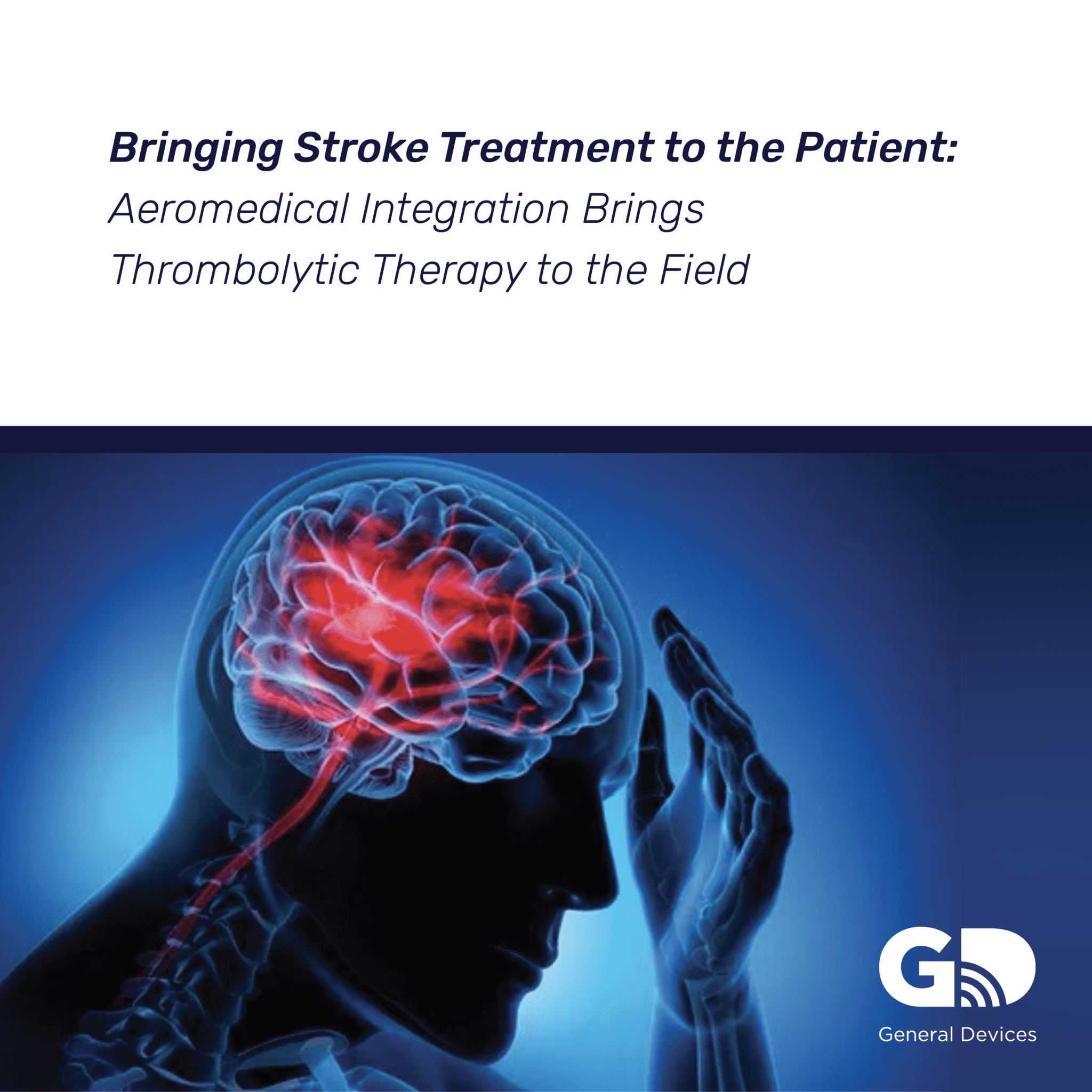Bringing Stroke Treatment to the Patient, Aeromedical Integration Brings Thrombolytic Therapy to the Field
In America, as many as 800,000 people suffer a stroke every year. Dealing with a stroke is always a traumatic and challenging event — for the patient, friends or family, and medical staff. Having to wait to get patients to a suitable hospital before carrying out the right scans and providing appropriate stroke treatment can take too long. These delays can mean the difference between life and death — or between paralysis and eventually regaining full functionality.
Thankfully, advancements in mobile medical technology, combined with telemedicine, provide several solutions for reducing the time-to-treatment gap and getting help to stroke victims faster. While mobile stroke units bring CT scans directly to the patient, aeromedical treatment options are also increasing. Let’s look at how these technologies are changing and saving lives — and why they are so critical for modern healthcare.
What Is a Mobile Stroke Unit?
The mobile stroke unit (MSU) is a highly specialized emergency medical unit — essentially, an ambulance designed specifically to deal with strokes. As well as carrying a specially trained staff, it has a mobile computerized tomography (CT) scanner onboard. There will also be drugs suitable for dealing with ischemic strokes and digital connectivity to allow the MSU team to liaise directly with the hospital and let them know what to expect.
The CT scanner is a vital part of stroke treatment. There are two types of stroke: ischemic and hemorrhagic. The former is far more common and caused by a blood clot in the brain. The latter is caused by bleeding in the brain, which could indicate either an aneurism or a burst blood vessel. Although hemorrhagic strokes are much rarer, they are far more deadly and harder to treat. Discovering what’s going on inside a patient’s brain quickly is key to having the best chance to save their life and help them retain the greatest possible quality of life.
Research Supports the Benefit of Timely Scan Data for Stroke Treatment
Research from the German mobile stroke unit called a stroke emergency mobile (STEMO), shows that significantly more patients were able to get effective treatment within the first hour, thus giving them a much higher chance at a good recovery or better post-stroke quality of life. Similar research in the New England Journal of Medicine indicated that out of 100 patients treated by the MSU, 27 will have less disability than without the early intervention, and at least 11 more individuals are disability-free.
The Utilization of MSU
When an MSU arrives at the scene, the team inside immediately gets to work. MSUs are already up and running in a number of U.S. states, with positive results noted already. Research is ongoing, of course, but it’s estimated that utilizing a mobile stroke unit cuts between 15 minutes and 2 hours from the time to treatment, which in terms of brain health, is a very big deal indeed.
Ideally, the MSU gets the patient on the move to a hospital with the right facilities as quickly as possible. But they can also carry out the relevant scans and administer drugs on-site, further reducing that all-important time lapse between stroke events and life-saving care.
Thrombolytic Therapy Explained
Thrombolytic therapy, also known as lysis therapy, is an emergency treatment to dissolve blood clots, the primary cause of strokes. Blood clots in the brain starve the brain of oxygen, so the longer the clot remains untreated, the worse the chances are for the patient. For every minute without medical intervention, up to 2 million brain cells could die. Delays of any kind can lessen the chances of survival and reduce the quality of life for those who do survive. With any stroke, there’s always a risk of paralysis or deficits. But that risk becomes much greater the longer it takes to deal with the clot that’s causing oxygen starvation in the brain.
Tissue plasminogen activator, or tPA, is the drug used to dissolve these blood clots. It’s normally administered via a drip, and the faster ischemic stroke sufferers can receive this treatment, the better their chances are. Unfortunately, tPA is not effective for sufferers of hemorrhagic strokes.
Aeromedical Care and Stroke Treatment
Aeromedical transport programs that allow patients to travel quickly from rural or poverty-stricken areas to major hospitals could be key to saving lives. Current research shows that helicopters with teams primed to provide thrombolytic therapy can take patients about 30 miles to a suitable facility and make sure they have the right treatment much faster than those without these aeromedical treatment options.
Combining aeromedical care with stroke treatments like thrombolytic therapy means that patients can be treated at the scene, then airlifted to the nearest hospital. The time to treatment is vastly reduced, greatly increasing their chances not only of survival but of a full recovery or a much higher quality of life than without such expedient treatment. This is even more important when dealing with small or isolated communities that don’t have immediate access to hospitals with the appropriate facilities.
Thrombolytic care from an MSU team, utilizing aeromedical care, is the advancement that makes the difference in the critical first hour for a stroke patient. General Device’s innovative mobile telemedicine solutions enable smarter patient care to improve the time-to-treatment gap and outcomes of stroke patients. Contact General Devices to learn more.

